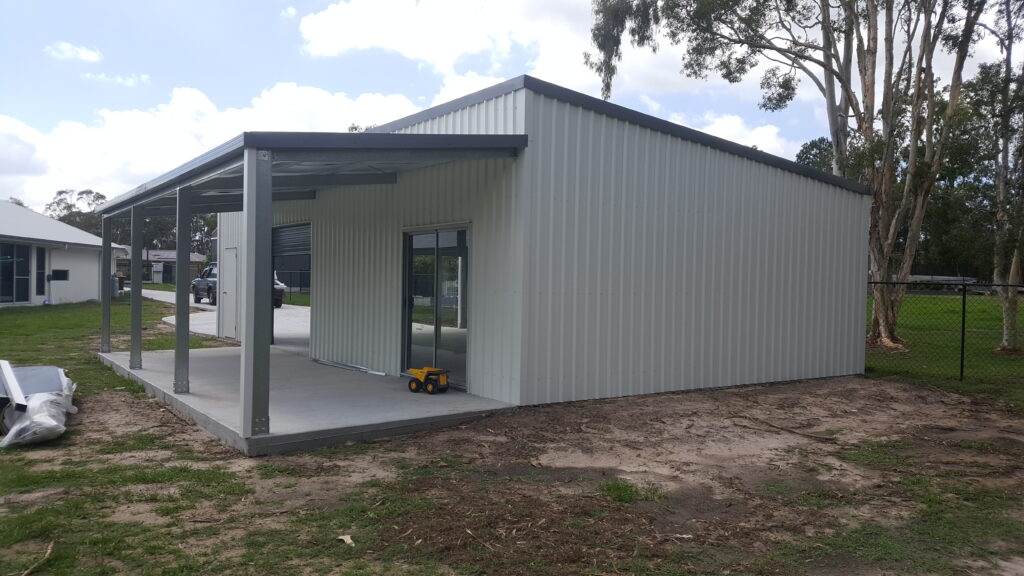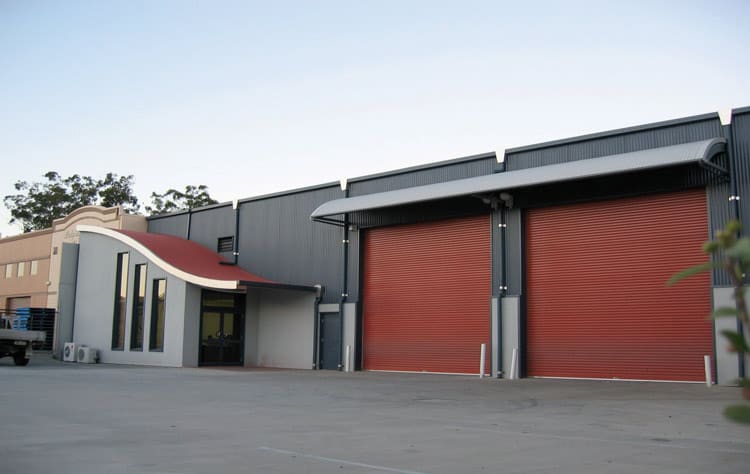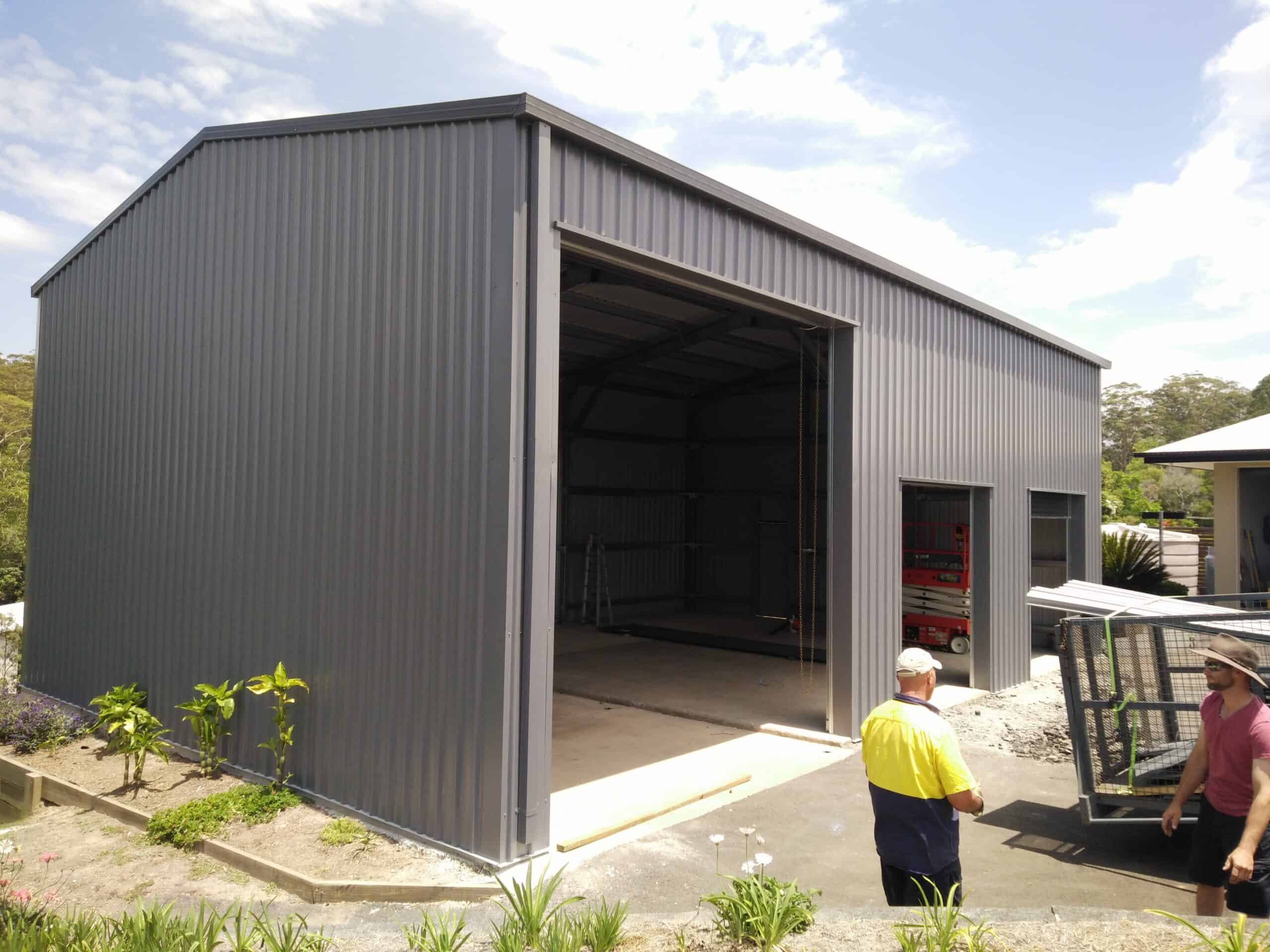Frequently Asked Questions and Answers for Shed Customers
As shed industry experts that talk to those who are in the market for sheds, (as well as those who sell, design and build sheds), we hear a lot of questions around building regulations and how they apply to sheds.
We recently covered some of the most commonly asked questions for shed regulations in NSW.
Here, we carry on that train of regulation thought, but with the Queensland-specific building regulations, for shed projects in QLD.
Here we’ll cover some of the most commonly asked questions, such as what permits are needed for sheds in QLD, what size sheds can be built without a permit in QLD, and more.
How do QLD shed regulations differ from other states?
While some of the regulations and processes can be similar across states and territories, unfortunately they are not completely the same.
Not only do the states vary, but some local councils require different levels of permits and certifications, and you may also be required to gain other additional local approvals, based on the specifics of your property or build site. This can include anything from environmental approval for environmental factors to specific requirements around fire safety and water runoff.
So, the advice is always to check in with your local council as to what the specific requirements are for your exact property and exact scenario. You can also speak to your shed retailer, shed builder, whoever has designed, planned and ordered your shed, or even a private third party contractor hired for this approval process.
We recommend starting with your shed retailer, designer and builder, as these parties will often have a strong knowledge of these areas through experience, may offer services to complete your applications for you, can provide you with the information you need to lodge with any applications required, or at the very least, could point you in the right direction. And of course, this guide will give you more of an idea on the overall process.
Before you build a shed: what to know
Before you build a shed, you need to be informed on the correct building classification suitable for the property and usage of the building. This information can be obtained from local council, surveyor, certifier or shed business.
In QLD, if you want to build a shed, your project must meet the requirements set out under this national building code.
In addition to meeting the building code requirements, you may need to apply for (and obtain successfully) the following:
Shed permits required in QLD:
- A building permit / building approval
- A planning approval
- Any other local, council or third party approvals or permits, depending on the specifics of your property and your local council’s rules.
Other important factors:
There are location-specific requirements for your property and local area within your state that may come into play. So it’s important to find out some key pieces of information about your property and any requirements that might apply, before you begin.
This includes things such as:
- Zoning
- Overlays
- Neighbourhood plans
- Any applicable council approvals you may need
- Anything else that may come into play, such as environmental factors, fire zone factors, waterway factors, and any other relevant location-based requirements for your specific area.
A word of caution with alterations or upgrades later:
If you plan to make any alterations to your shed down the track, it’s important to have a look at how this could impact your application process, and your building permits and approvals. It’s important to be careful about any upgrades to an existing shed as a rule, as upgrades and alterations may mean that your shed now requires a building permit, where one wasn’t needed before.
A note on electricity, solar and plumbing:
If you plan on installing electricity, solar panels or plumbing into your shed project, it’s important to look into how these could affect your permits, approval processes and timings before you begin. These are things that can make the permit process a little harder, and can also affect the permits, requirements and applications needed (for example, you may now need permits, where without these elements, you may not need permits).
What classifies as a 10(a) shed?
In Australian building codes, a Class 10(a) Shed is a non-habitable building that has a residential property on the same site. It isn’t the main feature of the surrounding landscape.
While a shed is a non-habitable building, it still must be built to comply with the minimum Building Codes of Australia standards and rules.
There may be different requirements, based on your local council’s specifics, if your shed is on a non-residential property (eg, a farm). Calling your local council is the best way to find out what these are for your specific property and area.
If you are building a shed that may be classed as habitable (class 1a), you might also have to comply with different standards, or receive different permits and applications. It’s important to check with your local council, shed retailer, and builder, about this first as well before getting started.

What size shed do I not need a building approval for in QLD?
Shed sizes in Queensland (and other requirements)
In Queensland, the Building Regulation 2006 and the Queensland Development Code set out the requirements of building a shed. Under these requirements, QLD sheds will not need a building approval if your shed meets all the following conditions:
- Is up to 9m2 in total area (and does not exceed this)
- Is under 2.4m in height (or right on 2.4m in height) and has an average mean height of 2.1m or under
- Is not more than 5m long on any side
- Won’t ‘affect’ the structural integrity of any other existing retaining walls, buildings, or any other structures on the property the shed is to be built on, or any adjoining property.
- Won’t alter or impact an existing pool fence or pool enclosure.
How do I get approval to build a shed in QLD?
Australia-wide, across most locations, the process for gaining building approval to build a shed usually involves submitting your plans for review and approval by the local council.
In Queensland, when you submit your plans to your local council, they’ll assess them against the applicable building codes, and regulations before giving you the official go-ahead and building approval certificate. Like most other states and territories, you need this before you begin your build.
It’s of course important to check what other approvals you need, aside from your building approval certificate. This will be specific to your shed’s features, size, location and more. Here’s how to go about it:

In QLD, to get a building approval to build a shed:
A building certifier can give you advice on the building approval, and some can organise your approval, if you provide them the right information; scaled, detailed plans for the build that have been completed by an architect or draftsperson.
Ask your shed retailer if they can provide this information (the drawings, specs and information for your building application) for you — if they use our industry-leading software, they can!
In fact, your shed retailer and or builder may be able to help you with the application process itself, and advice on what approvals and applications you need. We recommend taking this as a first step.
Getting help from an expert
Local councils will often recommend you get advice from a private building certifier or licenced contractor, to apply for the approvals you need, and to ensure you have covered all bases that you need to.
Some shed retailers will fall into this category, especially those who offer building services. Being in the business of sheds, most shed retailers will either know, or have some idea, and will usually be able to direct you to the right source of information.
Shed Retailers who use Quotec LIVE to design their sheds are able to provide home owners with engineering compliance and local council documents specific to the site address of where the building is located.
So we recommend asking whoever you’re ordering your shed through, and whoever is erecting your shed, how they can help.
The shed retailer who designs your shed and orders all of your shed materials (also known as your shed kit) will be able to provide you with the details and drawings needed for your building application if they use some of the best software in the industry. There’s also a good chance that they’re very much across the shed building application, and might even offer this service within their offering.
Your QLD shed must meet the building standards
In Queensland, you are responsible for making sure that the shed build complies with all of the applicable laws and standards. These cover the building assessment provisions across everything from fire separation and boundary setbacks, to structural soundness, and limits in size.
Specifically, the standards you have to make sure you comply with in QLD are:
- Chapter 3 and 4 of the Building Act 1975
- The Building Code of Australia
- The QLD Development Code
- And any ‘local law’ or ‘planning instrument’ from the Building Act 1975 that may apply
- You may also need local council approvals. You can contact your local council to check if any do apply for your property and build.
Here’s the usual steps for getting a building permit for a shed
Ensuring that you do check with your local council to be sure you don’t need to do anything else for your specific shed build and local council’s requirements;
These are the general steps that you’ll most likely have to take for your building permit application:
- Provide a copy of your intended shed design – with details like the specifications, architectural drawings, engineering details, materials information, and any other specific information you can provide.
- You’ll likely have to provide details on the build process itself and how you plan to go about this.
- Provide a purpose statement for the shed — what it will be used for, features, etc. This is an important step as it’s part of what determines whether your shed build meets the conditions and standards, and can prevent issues down the track.
- Lodge your building application for the shed — usually, you have to complete a formal application process to provide all of the required information above in a building application.
- You’ll then usually pay the application fee, and wait for your approval to come back. The more info you provide in your application, and the better your application is, the better chance you have of your approval coming back quickly.
- From here you’ll also need to check what other local permits or special approvals may be needed for your specific build and location, and apply for those too.
- Your building permit, and any other permits required, need to be approved before you commence your build.
Need help?
If you are finding all this a bit of a headache and would rather get the help of some experts, we don’t blame you — building regulations are notoriously difficult to understand for the average person (read: not immersed in the shed industry, building industry and experienced in QLD building regulations). A rule of thumb is to always check with your local council, to make sure you’ve got a handle on all the different types of permits you may need for your specific location and any other social or environmental factors that may come into play for your property.
There are various avenues you can take to get some help and guidance;
- The shed retailer that you are engaging to purchase your shed kit or help build your shed may be able to help, in the way of advice, or they may even provide a service to take care of this for you. Simply ask them how they can assist, or ask them whatever part it is you’re stuck on.
- Whoever has designed your shed may also be able to help, in the same ways as above.
- Whoever is building your shed should also be able to provide you with information, or assistance.
- You can also hire a third party to do your application process for you. These are called building certifiers and can help with the building approval, certification and inspection process.
- Or, when in doubt, call your local council — armed with all the relevant information, so you can ask the right questions — and they’ll let you know which additional permits and approvals you need for your specific project and site location, (in addition to your building approval) if any, or at the very least, how to find out that information for sure.
NSW Shed Regulations

